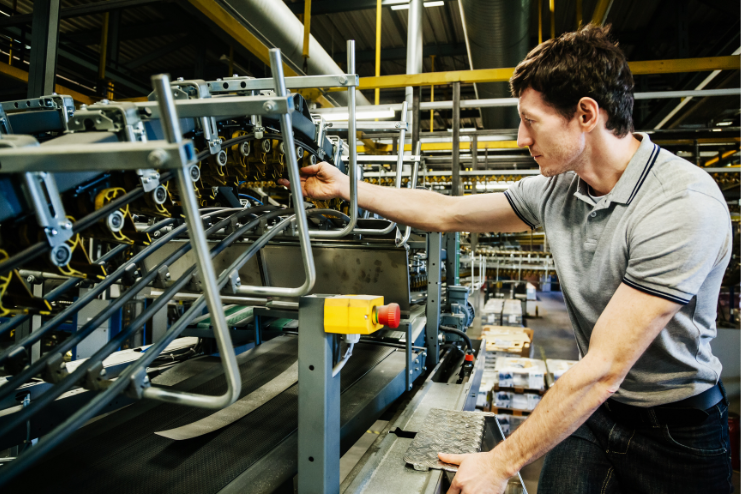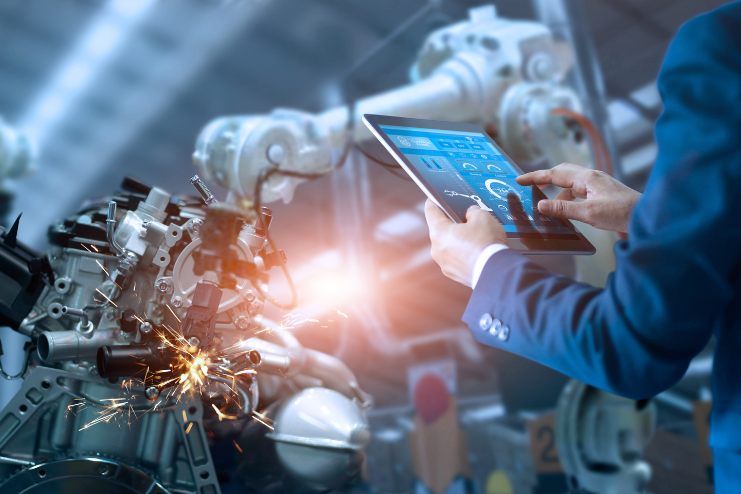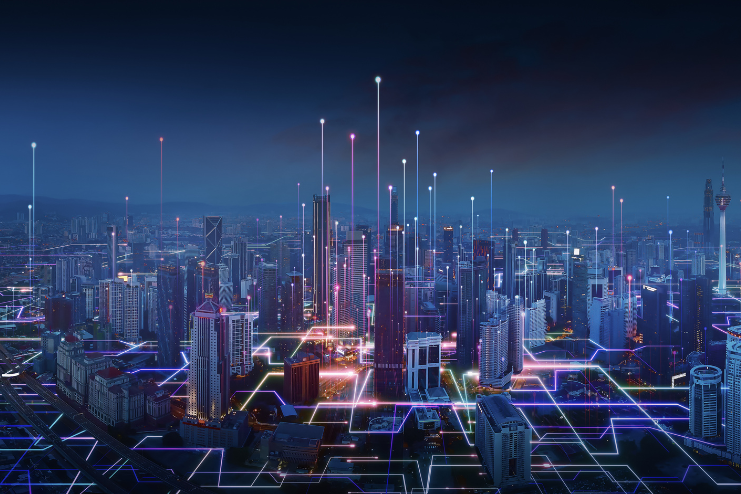Imagine this..
You are a maintenance professional responsible for ensuring the smooth operation of complex machinery in a manufacturing facility. Your day is filled with constant challenges and unexpected issues that require immediate attention. As part of your routine, you need to visually inspect each component on the manufacturing line for wear, damage, or potential failure.
Armed with experience and expertise, you are ready to examine each piece of equipment meticulously. However, as you approach the first machine, you can’t help but feel a sense of trepidation. The machinery is intricate, comprising numerous parts and connections, making it difficult and time-consuming to identify subtle defects or impending failures with the naked eye alone.
You wonder if there is a way to peer inside the machine to gain a deeper understanding of its internal condition without disassembling it entirely. A solution comes to mind – if only you could capture a detailed visual image of the machine’s internals, it would provide invaluable insights and assist you in making informed maintenance decisions, eliminating the time-consuming and laborious task of dismantling machinery.
This is where AI comes in.

In this article, we explore the transformative impact of AI in visual inspection processes today.
-
Manual Inspection and its Challenges
-
Integrating AI in Visual Inspection
-
Application of AI in Visual Inspection
-
Real-World Examples of AI in Visual Inspection
-
Future of AI in Visual Inspection
-
Take your inspection process to new heights with Aicadium View
Manual Inspection and its Challenges
Visual inspections play a crucial role in equipment maintenance, enabling the identification of defects in machinery and ensuring product integrity. Traditionally, these inspections relied on manual processes, where human inspectors visually examined components for flaws.
However, manual inspection methods have their set of limitations and challenges. They are prone to subjectivity and inconsistency due to variations in human perception and judgment. Detecting subtle defects has proven to be challenging, which ultimately leads to potential quality issues.
Manual inspections are also time-consuming, impacting production timelines and overall efficiency. The need for trained inspectors and their associated costs further contribute to the financial implications of traditional visual inspection methods.
These limitations have prompted businesses to explore and integrate AI-powered solutions, transforming their visual inspection processes.
Integrating AI in Visual Inspection
AI-powered systems possess the remarkable ability to detect and identify defects with exceptional precision, complementing the skills of human inspectors in maintaining consistency and objectivity. This integration ushers in a new era of efficiency and accuracy, allowing businesses to ensure higher standards while leveraging the expertise of their inspection teams. AI is a valuable supplement, enabling inspectors to perform their tasks more effectively and make more informed decisions.
One of the key advantages of integrating AI into visual inspection lies in its ability to handle complex inspections in hazardous areas that are hidden from human vision. With the continuous advancements in camera technology and computer vision algorithms, maintenance technicians can now conduct inspections remotely while maintaining a safe distance from the objects under examination. This breakthrough ensures both the safety of personnel and the preservation of equipment integrity, mitigating risks and minimising downtime.
Scalability is another advantage of AI inspection compared to manual methods. Training another human inspector to match the expertise and proficiency of an experienced inspector takes time, resources, and considerable investment. On the other hand, scaling AI inspection systems involves replicating software and deploying it to additional inspection stations or integrating it into existing infrastructure. This scalability allows businesses to increase throughput and handle higher volumes of inspections without the need for significant reliance on humans. By leveraging AI, organisations can streamline their inspection processes, reduce bottlenecks, and achieve greater operational efficiency, ultimately leading to increased productivity and faster turnaround times. This can also help ensure the consistency of processes and capabilities across various manufacturing facilities.
The benefits extend beyond safety and accessibility. By automating visual inspections through AI, businesses can significantly reduce human error while enhancing productivity. AI-powered systems work tirelessly, analysing vast amounts of data in a fraction of the time. This efficiency increases throughput and allows inspectors to redirect their focus towards more strategic and complex tasks, optimising resource allocation and utilising their expertise where it matters most.
Applications of AI in Visual Inspection
Predictive Maintenance: AI is able to analyse data and predict when a piece of equipment might fail. Through the monitoring of factors like temperature, vibration and performance metrics, AI can anticipate maintenance needs, allowing technicians to perform maintenance before any breakdown occurs. This ultimately minimises any downtime and prevents costly unplanned production delays.
Assembly Inspection: AI can be used for assembly inspection to detect missing parts, wrong product or asset configurations, and the correct assembly order during various production stages. By analysing visual data, AI-powered systems can compare the assembly process with predefined guidelines or CAD models to identify deviations or errors. This helps ensure that products are assembled correctly, reducing the chances of faulty or non-compliant products reaching the market.
Defect Detection and Classification: AI-powered systems can analyse visual data to identify defects in products or components with precision. The key to a successful deployment is to require as little data as possible to get started. Modern AI approaches, such as few-shot learning, have made it possible to train models with only a small number of samples, reducing the burden of data collection and annotation. By training algorithms, the AI models are able to recognise patterns associated with defects and classify them accurately. This automated defect detection enhances quality control processes, reduces reliance on manual inspections, and ensures consistent and reliable results.
Surface Inspection and Texture Analysis: AI algorithms excel at inspecting surfaces for imperfections, scratches, or other irregularities. By analysing visual data, AI-powered systems can identify and classify surface defects or variations, even in complex textures. This is crucial in industries such as automotive, electronics, and textiles, where surface quality directly impacts the performance and aesthetics of products.
Object Counting and Dimension Measurement: AI algorithms can automatically count items and measure the dimensions of objects of interest within images or videos. This capability is useful in inventory management, logistics, and quality control scenarios.
Here are some Real-World Examples of AI in Visual Inspection
Electronics Manufacturing: Foxconn, a leading electronics manufacturer, incorporated AI-powered visual inspection systems on their production lines. These systems utilised machine learning algorithms to identify defects in electronic components, such as circuit boards. By automating the inspection process, Foxconn saw a reduction in at least one-third of the operating costs for appearance defects inspection projects.
Automotive Industry: Ford Motor Company implemented AI-powered visual inspection systems to improve quality control in their production processes. They utilised computer vision algorithms and machine learning techniques to analyse visual data and identify defects in-vehicle components. For example, during manufacturing, the AI system can detect surface imperfections, such as scratches or dents, on car body panels. By automating these inspections, Ford was able to ensure consistent quality standards, reduce the risk of manufacturing defects, and enhance customer satisfaction.
So, what’s next?
As AI algorithms evolve, they become better at recognising patterns, analysing images, and informing intelligent decisions. This progress enables visual inspection systems to detect defects and anomalies with higher accuracy and speed.
Integrating AI with the concept of Industry 4.0 presents an incredibly exciting future. A network is created by seamlessly connecting Internet of Things (IoT) devices like sensors and cameras to AI-powered inspection systems, forming a digital ecosystem that revolutionises how visual data is monitored and analysed in real-time.
In this future, minute details are captured with meticulous precision, subject to rigorous analysis, and anomalies are detected. The result? Accelerated production processes, unwavering commitment to quality, and a level of precision that surpasses expectations.
Take your visual inspection process to new heights with Aicadium View™
Are you ready to take your visual inspection process to new heights? Because if you are, we can help you reach them with Aicadium View™, our computer vision product.
Aicadium View™ has helped countless companies bridge the gaps between quality, safety, and productivity. It seamlessly integrates into camera infrastructures and daily work routines, allowing workers to perform their duties more efficiently. Our product acts as an additional pair of eyes for organisations, assisting them in boosting production quality and workflows while ensuring workplace safety and equipment maintenance.
Let us help your business achieve its full potential by implementing our AI-based computer vision.
Schedule a 15-minute consultation call with us today.





